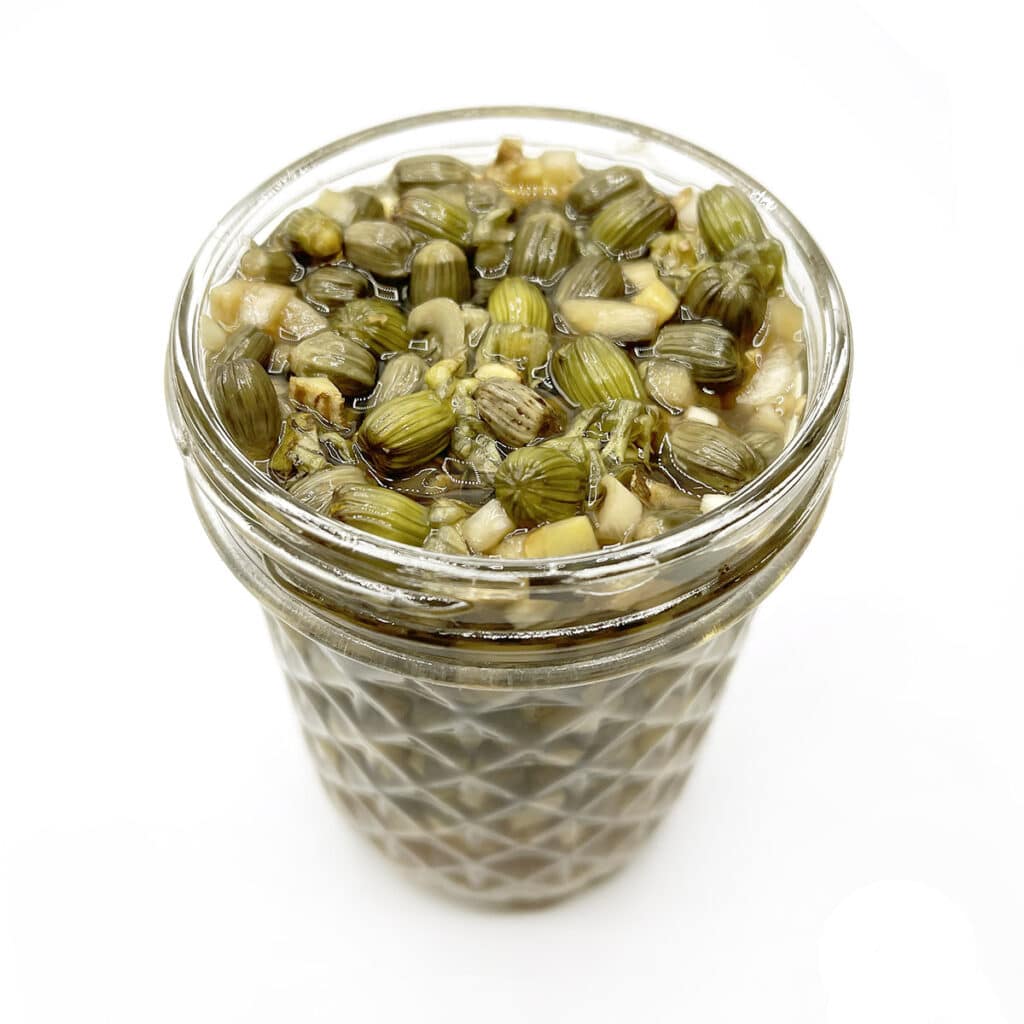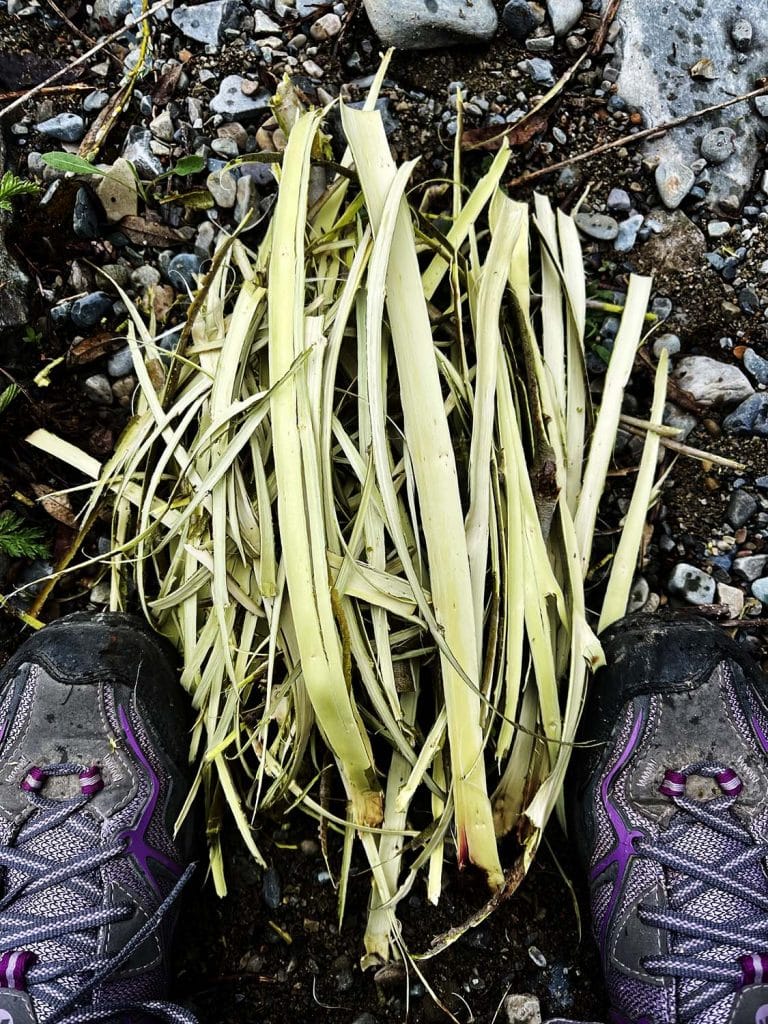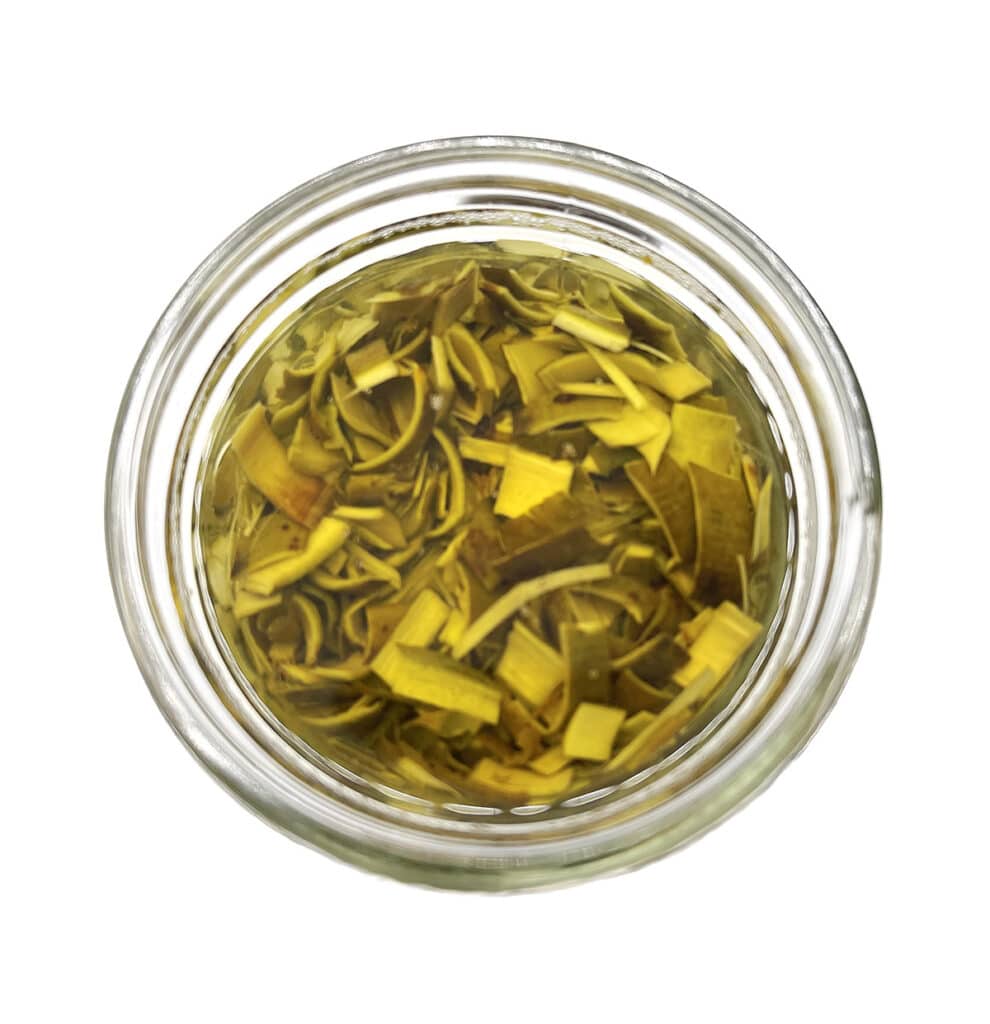I’m excited to announce that I just began a 4-month apprenticeship with the wonderful Suzanne Tabert of Cedar Mountain Herb School. I’m literally vibrating with excitement over all I’ll learn in the coming months.
Because she’s newly relocated to North Idaho, this year’s apprenticeship is quite a bit smaller than is typical — so we apprentices are very fortunate to have Suzanne all to ourselves. ♥
Yesterday was day #1 and it did not disappoint. Early in the day, we gathered dandelion buds and made delicious pickled dandelion capers with onion, garlic and ginger in apple cider vinegar. They’ve only been pickling for a day and they already taste amazing! The leftover infused vinegar will make an amazing salad dressing when the capers are gone.

Then we carpooled out to a remote location in the mountains and spent the rest of day learning about identifying different types of conifers, talking about my favorite cottonwood buds and wildcrafting with willow bark. Did you know that you can estimate the age of most conifer trees by counting rings (whorls) of branches? You can! This is easier done on smaller trees, but each level of branches is arranged in a distinct ring going up the trunk. Each ring represents a year of growth.
We set up our “office” for the day next to a fast-moving creek in a little grove of willow trees with a few young cottonwoods mixed in. According to Suzanne, willows and cottonwoods are “cousins that like each other” (and often grow near each other). The sound of the rustling trees and the rushing water was as calming and therapeutic as any pharmaceutical could hope to be. ♥
I’d never wildcrafted fresh willow bark (Salix spp.) before, and it was thrilling to get to work with the live plants. Suzanne showed us how to peel and scrape away the pliable outer bark from the branch, which is where most of willow’s medicinal properties reside. It was a bit of a workout, but we managed to cut several good-sized willow branches and spent the afternoon peeling them and cutting the bark into little pieces. The more surface area you can expose to the menstruum, the better your final product.

Willow regenerates quickly, so it’s a very sustainable plant to harvest. Additionally, willow contains a constituent called indolebutyric acid, which is a plant hormone that stimulates root growth. That’s right, an all-natural rooting hormone! You can make a tea out of the bark or leaves and use it to water your plant starts to encourage them to form good roots. Fabulous. I’m thinking about adding willow bark tea to my hydroponic feeding solution too!
When harvesting willow, cut off any branches that are too small to use and stick them back in the soil. Thanks to its built-in rooting hormone, some may take root and form new plant!
While we worked, Suzanne talked about how to distinguish male willows from females. Most species of willow are dioecious, meaning male and female flowers grow on separate trees. Take a close look at the tiny hairs that cover the fuzzy willow catkin. The male plants have teeny little balls on the end of each hair. The female plants have a slight split at the end of each hair, forming a V.
Who knew?
In addition to being a great pain reliever, willow also contains polyphenols, which help repair the inner lining of blood vessels. Willow’s constituent apigenin is an anti-inflammatory and antioxidant flavonoid that enhances cellular autography (i.e. your body’s housekeeping process that cleans out damaged cells). Apigenin may also ward off diseases of oxidative stress and certain cancers by preventing them from replicating.
After a couple of hours of peeling, chopping and chatting, we divided our freshly chopped willow bark into three jars to make into an alcohol tincture, an infused witch hazel and infused honey.
The witch hazel will infuse for about 3 weeks and will become a skin toner with a gentle exfoliating action thanks to willow’s salicylates, which are salicylic acid compounds.
The willow tincture will be ready in a couple of weeks and can be used internally (taken in water) for aches and pains. Willow works more slowly than aspirin, but causes fewer gastric side effects, and the effects last longer in the body. In fact, studies suggest that a standardized willow bark extract containing 240 mg of salicin is roughly equivalent to 87 mg of aspirin. The tincture can also be used topically as a liniment – just pour a little onto a gauze pad and place it over a painful spot.

The willow honey will infuse for about 6 weeks. Herbal honeys are a really lovely way to take herbs that are, otherwise, not so nice tasting. Willow is pretty bitter and isn’t terribly appetizing on its own. You can also use the infused honey topically on wounds and burns.
At the end of the day, we packed up our gear, including all of our spent willow branches — which were given back to the river — and left the site looking as though we had never been there. We hiked back to the truck tired, cold and exhilarated.
The view from our “office” wasn’t too shabby either ♥



